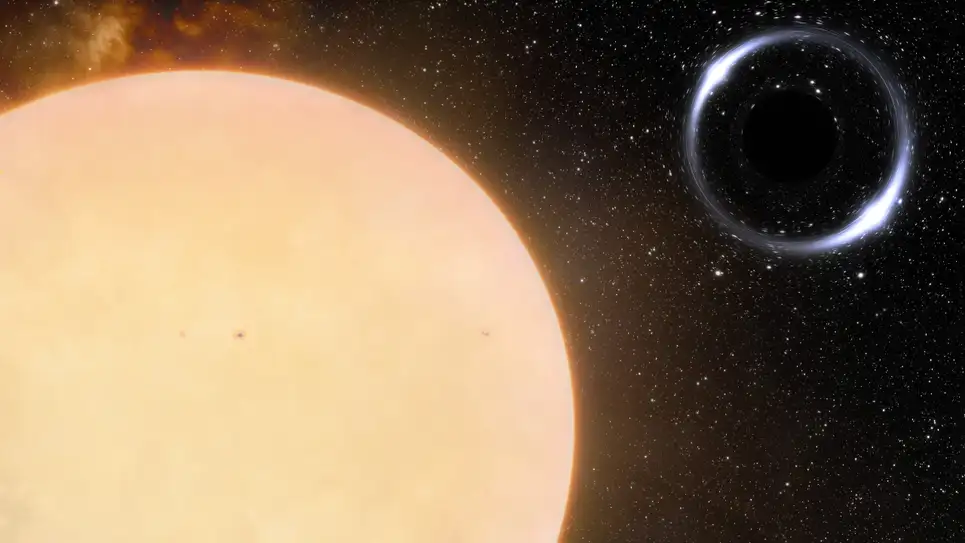Astrophysicists discover black hole closest to Earth
- November 12, 2022
- 0
Astronomers have recently discovered a small black hole hiding 1,600 light-years from us in the constellation Ophiuchus. And this black hole, now named Gaia BH1, is the closest
Astronomers have recently discovered a small black hole hiding 1,600 light-years from us in the constellation Ophiuchus. And this black hole, now named Gaia BH1, is the closest

Astronomers have recently discovered a small black hole hiding 1,600 light-years from us in the constellation Ophiuchus. And this black hole, now named Gaia BH1, is the closest known black hole to Earth. The previous holder of this title was three times the distance from Earth to Gaia BH1.
Black hole Gaia BH1 is part of a binary system, the other part of which is a Sun-like star orbiting the black hole. This space object was first discovered by the Gemini North telescope in Hawaii and further research was carried out with the help of the Gaia space observatory. It was these studies that showed some peculiarities of the movement of the star, in which the influence of a large space object can be seen.
Further measurements made it possible to accurately determine the orbital period of the star’s rotation and calculate the mass of the accompanying invisible object. The major difficulties in this case were due to the fact that the Gaia BH1 black hole is completely immobile, does not absorb the matter around it, heats it to high temperatures, and does not emit X-ray radiation. The only visible sign of its existence is the effects of gravity on the motion of its companion star.
Scientists have simulated many different scenarios of the dynamics of the movement and have not found a suitable explanation. Also, all existing theories about binary systems containing a black hole and a star do not explain the dynamics of the Gaia BH1 system. According to these theories, the star in such a system would have to be very large and previously adjacent to an even larger star and then turning into a black hole.
“This case is the first confirmed detection in our Galaxy of a Sun-like star orbiting a large stellar black hole, that is, with a mass comparable to the mass of some stars,” the researchers wrote. to write.
To understand the dynamics of the Gaia BH1 system and to refine existing theories and models, astronomers need to find and study many more such binary systems. And they are looking at existing and new astronomical instruments, such as the IXPE, NICER, and NuSTAR space-based X-ray observatories, to aid in this effort. Source
Source: Port Altele
John Wilkes is a seasoned journalist and author at Div Bracket. He specializes in covering trending news across a wide range of topics, from politics to entertainment and everything in between.